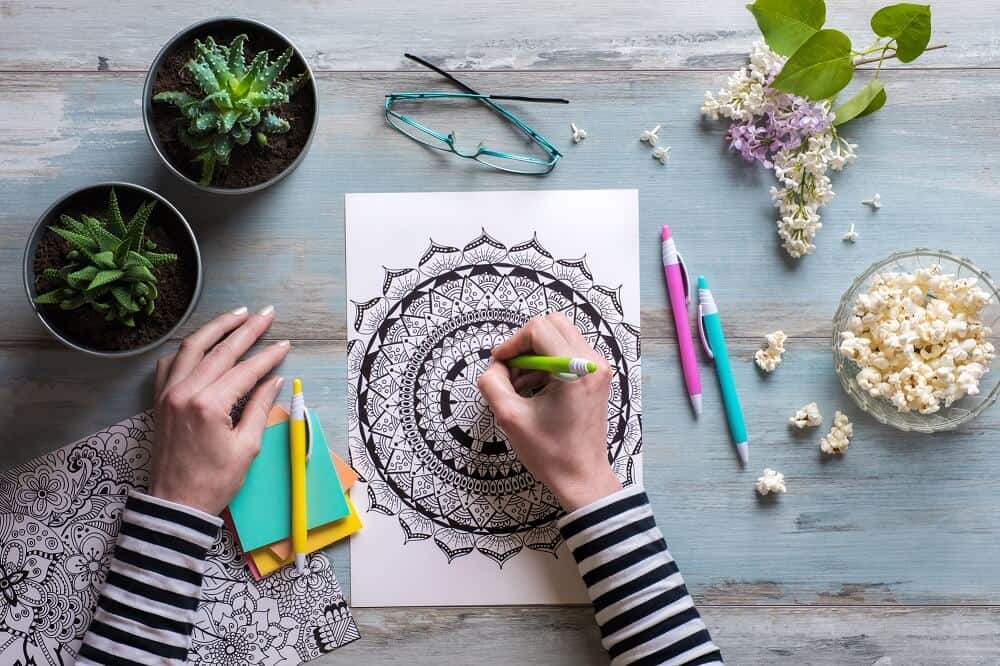Many things happened unexpectedly this year, from terrorists’ attacks to an epidemic that caused the lives of so many people. People has been forced more often than not to stay inside their homes and temporarily stop the normal routine in their lives. Spending a lot of time at home can cause one to think too much and mindfulness is just one way of getting rid whatever is inside your mind.
Mindfulness
Mindfulness is just one of the common practices that helps divert your attention and purposely focus on what is happening at the present moment – accepting it without judgement. It is achieved when a person reaches a certain state where they become more aware of the present moment while acknowledging and accepting whatever it is that they are feeling, thinking, and the bodily sensations that is overflowing in their body.
Benefits of Mindfulness
Improves well-being
Mindfulness increases your capacity to support many attitudes that contribute to a more satisfied life. The state of mindfulness makes it easier for one to enjoy the pleasures of life. It also allows you to be fully engaged in activities and increase your capability to face future untoward events. Many people who practices mindfulness see the differences on different aspects of their lives – they worry less about their stressors, the present and the unknown future. They become less preoccupied on the pressure to be successful and are able to make better and deeper connections with other people.
Improves physical health
The mind and the body are interrelated. One works because of the other. When one is harmed, it causes the other to disfunction. Using mindfulness to connect the body and the mind is a great way of improving one’s physical health. Many studies done showed significant results on using mindfulness in relieving stress, lessening the chances of having a cardiac disease, lowers blood pressure, reduces chronic pain and improves sleep.
Improves Mental health
Mindfulness, as a part of science, has its own contributions when it comes to treating a person suffering from any mental health problems. Psychologists and Psychiatrist proved the success of using mindfulness in treating a number of mental illness such as: depression, substance abuse, eating disorders, conflicts, anxiety disorders and obsessive-compulsive disorder. The ability of state of mindfulness to help a person accept their experiences – past, present and future. It has a great impact on how people who are suffering from such disorders are able to cope with it.
Mindfulness Colouring

Mindful colouring is another technique of mindfulness where you bring one’s awareness to the present moment by consciously focusing on colouring and designing. Unlike the other techniques where you focus on breathing, mindful colouring focuses on the weight of the pencil on your hand, the shade of colours that you are painting or colouring your paper, and the feelings that is filling your body as you are doing the activity.
Mindful colouring is almost similar to meditation. We let go of any thoughts about tomorrow or yesterday or when you are going to finish the activity. If you catch yourself thinking about the past or the future, revert your mind again to what you are doing in the present moment by describing it. Let go of your judgements while colouring and don’t think if what you are doing is good or bad, amazing or terrible and whether the outcome will be good or not. Remember, the focus of mindful colouring is the process of it, not the possible outcome of colouring. There is no right or wrong way to colour. Think of it as one way of expressing yourself. In mindful colouring, we pay attention on what is happening on the present with curiosity, openness and acceptance.
Effects of Mindfulness Colouring
According to researches, mindful colouring was found to be a great way to reduce a person’s anxiety and stress. It diverts one’s attention from the stressor and allows them to switch off these thoughts and focus on colouring.
It was also found to improve sleeping patterns especially for people who are having a hard time sleeping. It improves a person’s vision and motor skills. The semi-mediative state that the mindful colouring has caused can provide us with some much-needed brain relief by lowering the activity of the amygdala, the part of the brain which controls emotion. Lastly, it helps build our focusing skills that is definitely helpful in studying and foster a sense of compassion.


 Kaizen is the simple technique of practicing something for one minute every day.
Kaizen is the simple technique of practicing something for one minute every day. Even the biggest mountain can seem smaller if you take it one step at a time.
Even the biggest mountain can seem smaller if you take it one step at a time. A simple technique that requires daily discipline to achieve noticeable results.
A simple technique that requires daily discipline to achieve noticeable results. Each step that you take in your personal growth is a cause for celebration.
Each step that you take in your personal growth is a cause for celebration. Imagine what you could achieve through the pursuit of continuous improvement.
Imagine what you could achieve through the pursuit of continuous improvement.